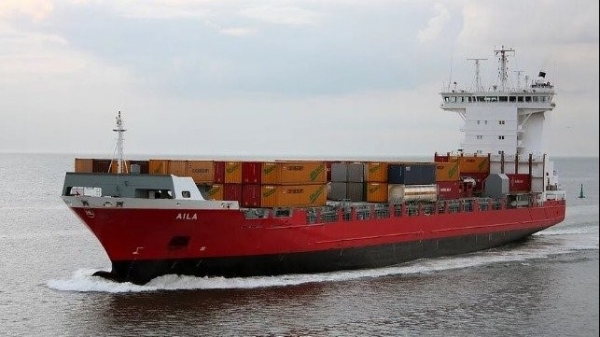Nearly All the Oil has Been Recovered from OS 35 off Gibraltar
Salvage teams working around the clock on the wrecked bulker beached off Gibraltar passed a key milestone reporting that they have recovered nearly all of the oil aboard the vessel. The recovery efforts are continuing to focus on various parts of the ship while clean-up efforts also made progress in reducing the flow of oil onto Gibraltar’s beaches. As a result, the government is looking to step down starting on Tuesday, September 6 from the “major incident” to permit more activities in the port.
“With the exception of Tank 2, the salvors are confident that all concentrations of pumpable oil have been extracted, including those in the main engine room tanks. Some product remains in Tank 2, which the salvors plan to attempt to extract,” the Government said in its end-of-day update on Monday, September 5.
They, however, warned while less of a threat to the environment that there are still small tanks around the ship with small quantities that need to be emptied. There have also been some discrepancies between the amounts of fuel reported by the vessel’s crew and what was removed by the salvage teams. A final measure is still being taken on the amount of diesel and low sulfur fuel oil removed from the tanks plus efforts have also begun looking for the presence of any oil concentrations in void spaces and non-tank spaces.
Yet, while the teams are confident that most of the recoverable material has now been removed, government officials continue to warn that “continued discharge of pollutants is expected until the time that the salvage operations are complete.”
The containment and recovery efforts were complicated overnight by stronger winds. The teams reported that the second containment boom around the vessel had been displaced but with the aid of Salvamento Maritimo they were restoring the boom and adding weights to hold it in place. A boom near a beach also needed to be repositioned while five vessels also remain in the area with sorbent booms deployed. There are also two pairs of vessels towing a “J” formation boom to capture oil that leaks past the booms around the vessel.
Langh Ship Orders Feeder Ships that will Help Pioneer New Technologies
Langh Ship, based in Finland, ordered a new generation of highly efficient feeder containerships which will also be used to pioneer new technologies designed for the future challenges of the shipping industry. In addition to being specifically designed for the challenges of the Northern European market, including an ice-class hull, the vessels will incorporate advanced technologies from the shipping company’s sister organization Langh Tech. With orders such as this, European feeder ships are at the front of the industry’s efforts to reduce carbon emissions.
The three 1,200 TEU container vessels will be built at the Paxocean shipyard near Shanghai, China. Each of the vessels will be approximately 490 feet long with an 88-foot beam and nearly 29-foot draft. Designed by Langh Ship in collaboration with the Shanghai Merchant Ship Design & Research Institute (SDARI), the vessels are optimized for the European market. The design is for 45-foot containers both in the hold and on deck and the vessels will be built to Finnish/Swedish ice class 1A.
”In the European market we see a need for this type and size of container feeders,” says Laura Langh-Lagerlöf, Managing Director of Langh Ship. ”By optimizing the hull lines we managed to maximize the cargo capacity and at the same time minimize the energy consumption, still keeping a speed of 18 knots if needed.”
Langh Tech is also involved with the new ships reporting that they using the designs to pilot new concepts to improve the environmental performance of the ships. The new buildings will be equipped with a two-stroke, slow-speed main engine for the best fuel economy. The main engine as well as the three auxiliary engines will all meet the stringent IMO Tier III requirements for NOx-emissions. The main engine can also be operated on biofuel as soon as it will become available on a larger scale.
”It is exciting to get new vessels into our sister company’s fleet as on these vessels it is easy for us to do piloting of various new concepts,” Kim says. ”There will be at least the hybrid scrubber, carbon capture, and BWMS delivered by Langh Tech, let’s see what we will come up with in addition to that,” he added.
The hybrid scrubbers from Langh Tech feature a new design that may be operated continuously in closed loop mode without time restrictions. In addition, it will build on the company’s work incorporating carbon capture into the exhaust scrubber.
Other environmental considerations include preparing the vessels with a shore power connection and a hybrid solution including batteries. Langh Tech will also supply the ballast water management system, where the water needs to be treated only at intake. According to the company, with an innovative flow pattern in the UV reactor, the LanghBW units have received IMO approval with only one treatment cycle. This saves energy and doubles the lifetime of the UV lamps.
The new vessels will be the next step in the company’s effort both to expand its operations and prepare for net zero operations. Langh Ship also recently ordered three multipurpose newbuilds, which are under construction at the Wuhu shipyard. Langh Ship currently has a fleet of ten vessels.




